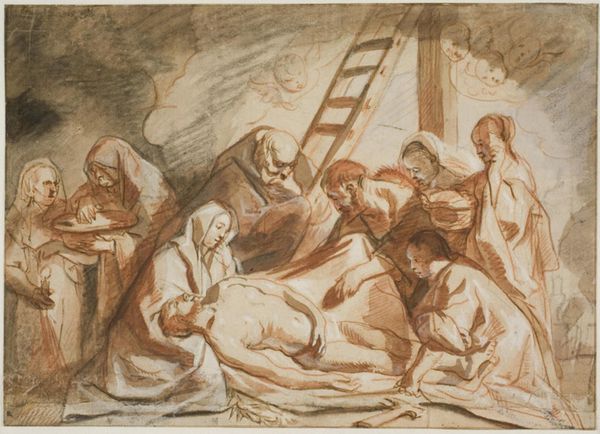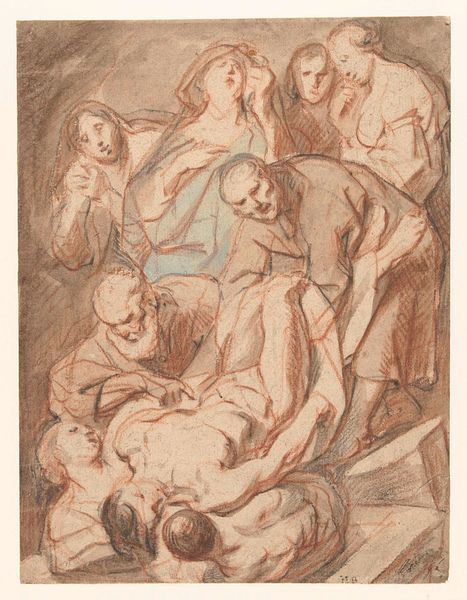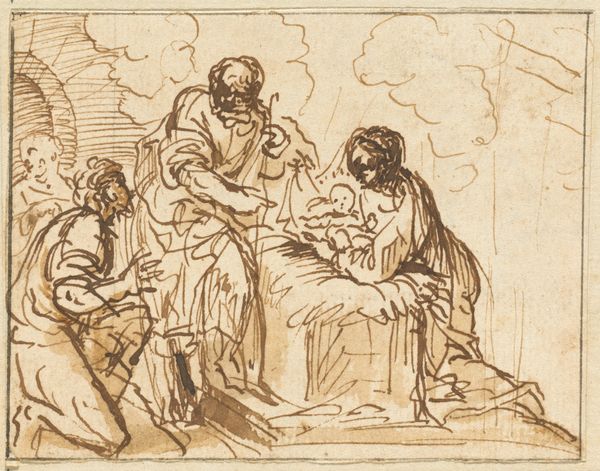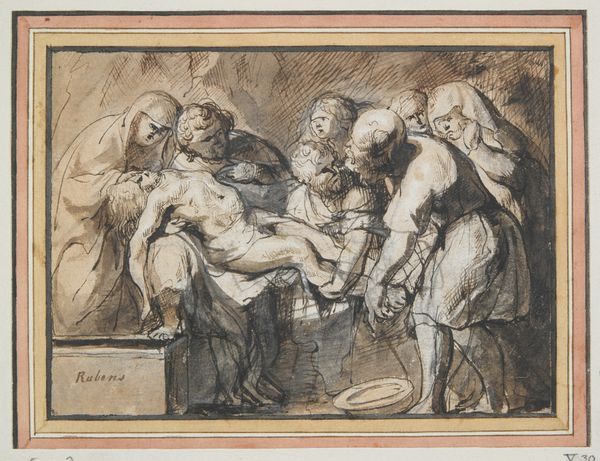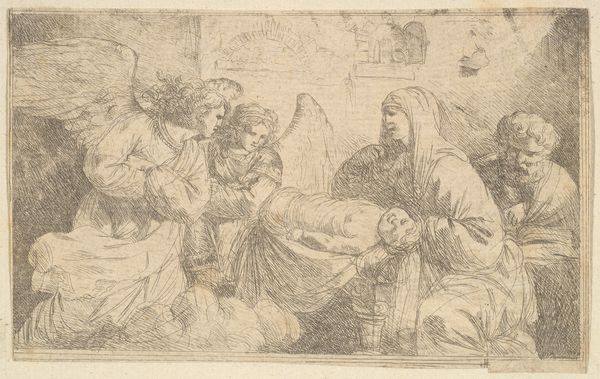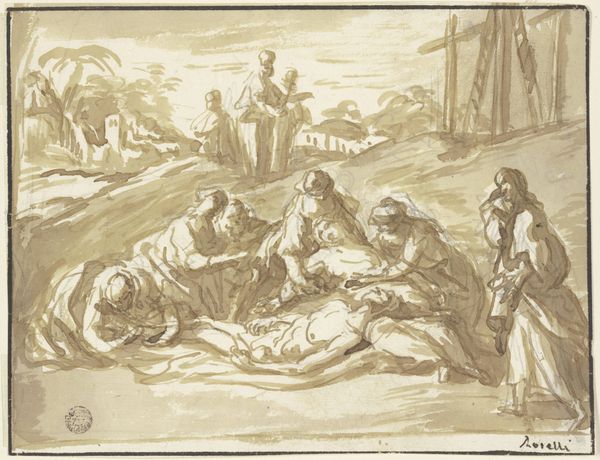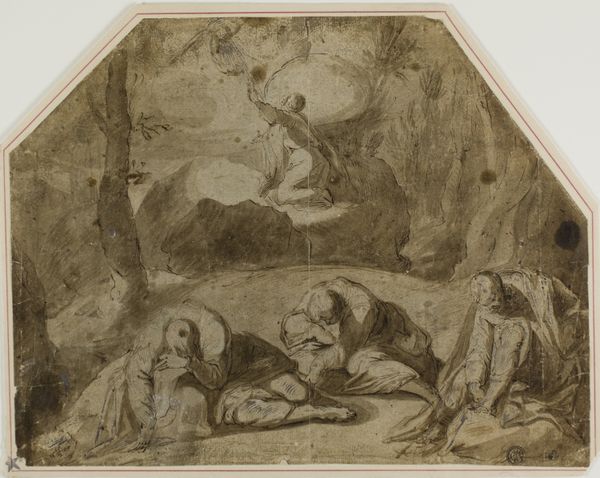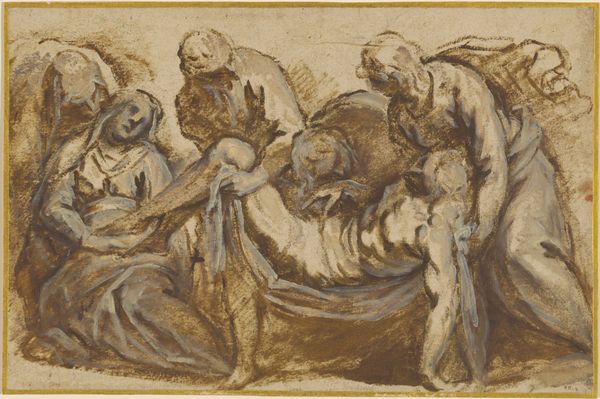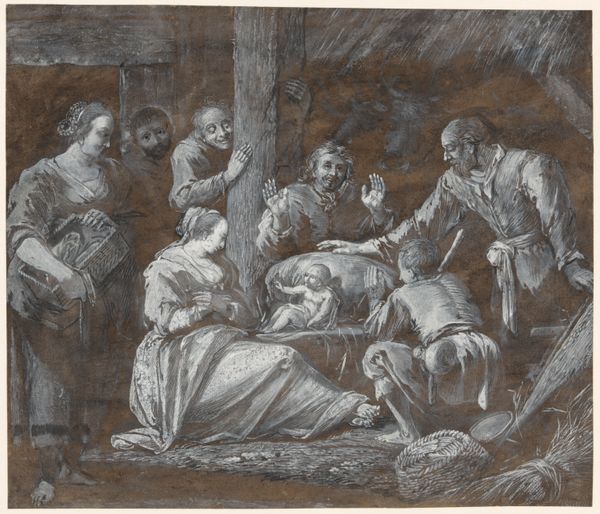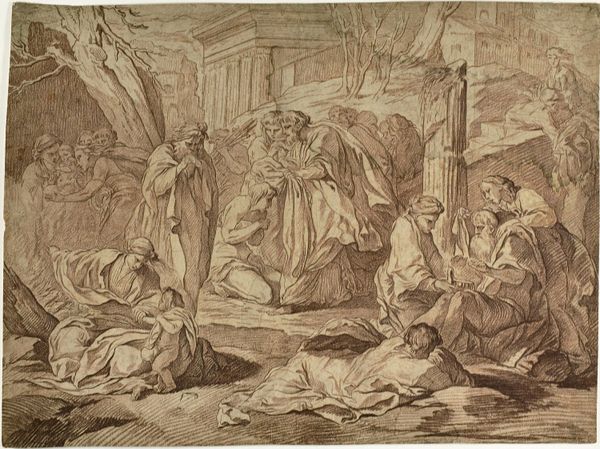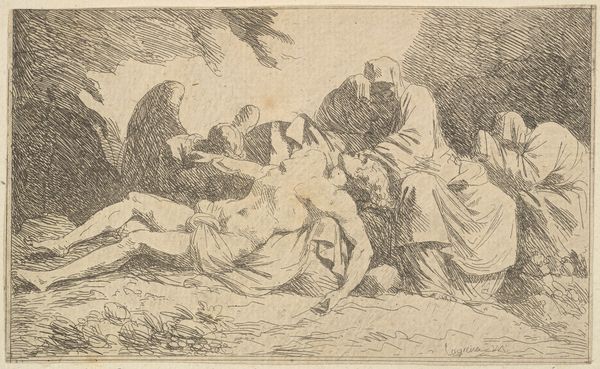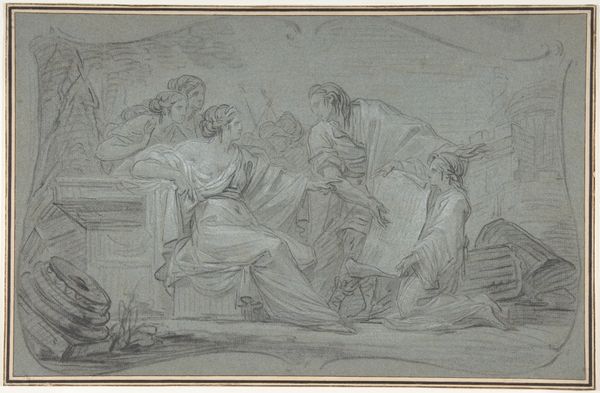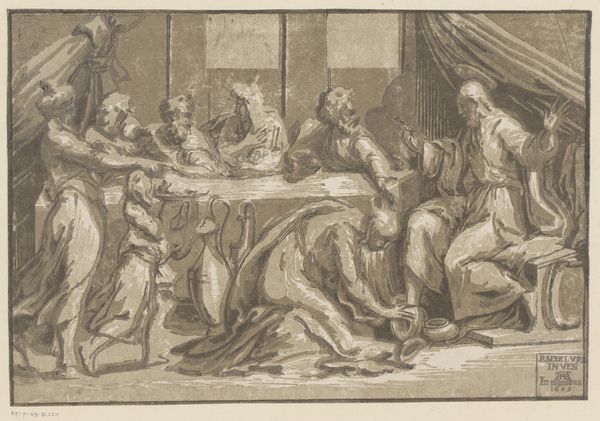
Tre studier af gestikulerende napolitanske fiskere 1810 - 1873
0:00
0:00
drawing
#
drawing
#
abstract painting
#
charcoal drawing
#
possibly oil pastel
#
oil painting
#
fluid art
#
acrylic on canvas
#
coffee painting
#
underpainting
#
painting painterly
#
watercolor
Dimensions: 136 mm (height) x 209 mm (width) (bladmaal)
Curator: Before us, we have Wilhelm Marstrand’s “Tre studier af gestikulerende napolitanske fiskere,” dating from between 1810 and 1873 and currently held at the SMK, the National Gallery of Denmark. Editor: My initial response is one of controlled somberness. The reddish-brown washes create a uniform tonality that mutes any vibrant emotion; instead, it feels carefully observed and emotionally restrained. The overlapping forms almost coalesce into a unified mass. Curator: I see it as a depiction of collective grief and reverence, a tableau vivant evoking shared emotions surrounding loss. The figures themselves, likely embodying roles passed down through generations, signal a cultural memory. Even the ladder and hovering angels echo artistic traditions about resurrection. Editor: The composition, though seemingly simple, is structurally very effective. The downward gazes and bent postures form converging lines, all directing the viewer's eye toward the pale body at the center. The angels function as a sort of aerial balcony in which the scene almost performs itself, and yet are not integrated to the tonal ground, rather floating beyond it. Curator: Right, and note the almost ritualistic presentation of what could be offerings by the figure holding the bowl, embodying traditions for coping with grief. I see continuity of visual storytelling across centuries and cultures in these gestures of consolation and respect. Editor: The restricted palette emphasizes the artist’s technical skill with line and tonal variation to express volume. The use of hatching is remarkably simple and elegant. But the lack of sharp tonal contrast is what is for me key in setting the elegiac stage, where the action seems like some fading dream of suffering. Curator: What strikes me is that Marstrand distills the scene into a readily identifiable cultural symbol—a communal mourning. Editor: Indeed, but within what you have named 'communal,' there are very careful delineations to observe through Marstrand's tonal structuring, I think. Curator: This exploration reveals how cultural memory finds expression in visual art, particularly in portraying enduring human experiences like bereavement. Editor: It’s fascinating to examine how, within what might appear like the spontaneity of the artistic gestures, resides this structural control.
Comments
No comments
Be the first to comment and join the conversation on the ultimate creative platform.
